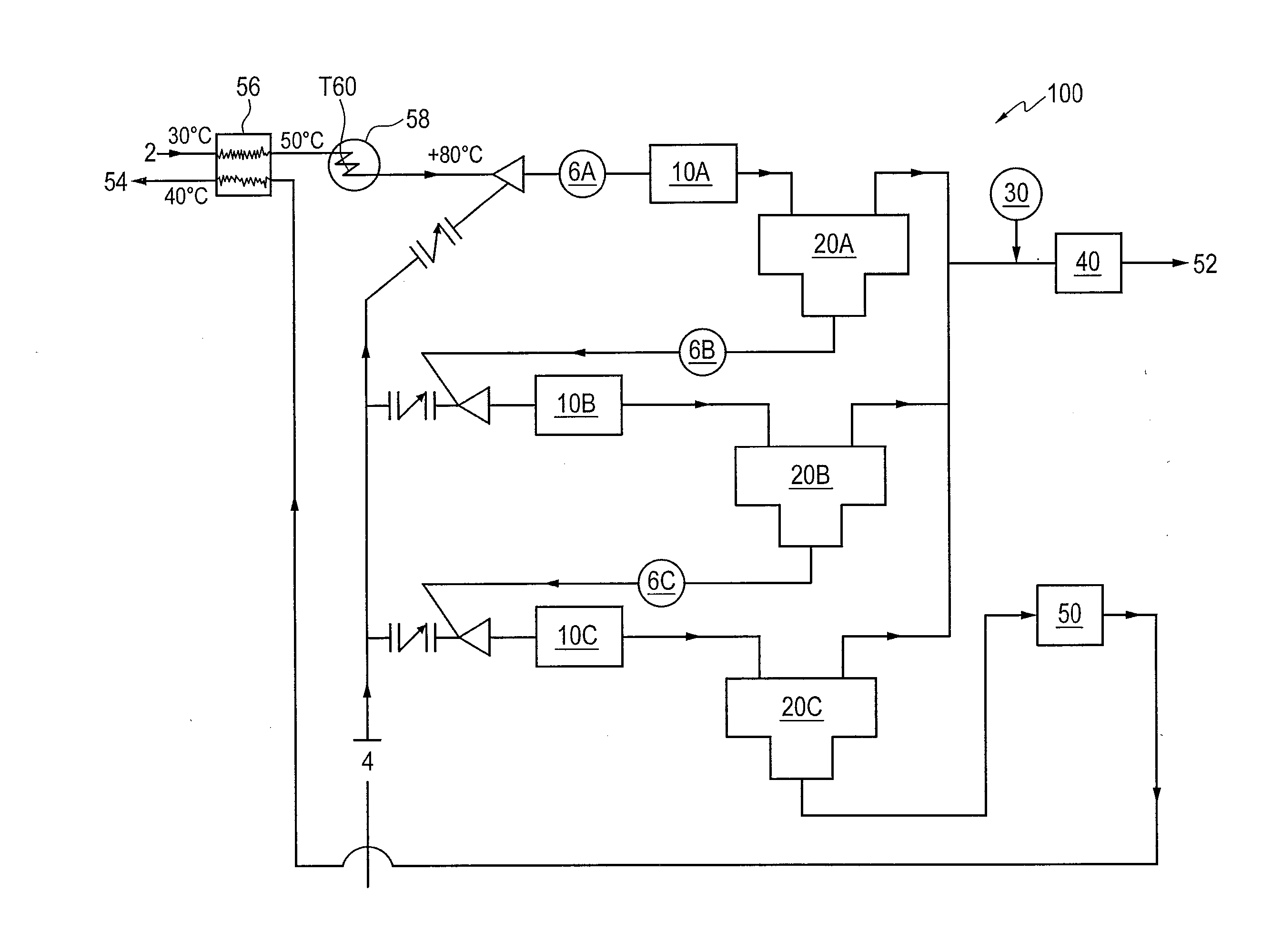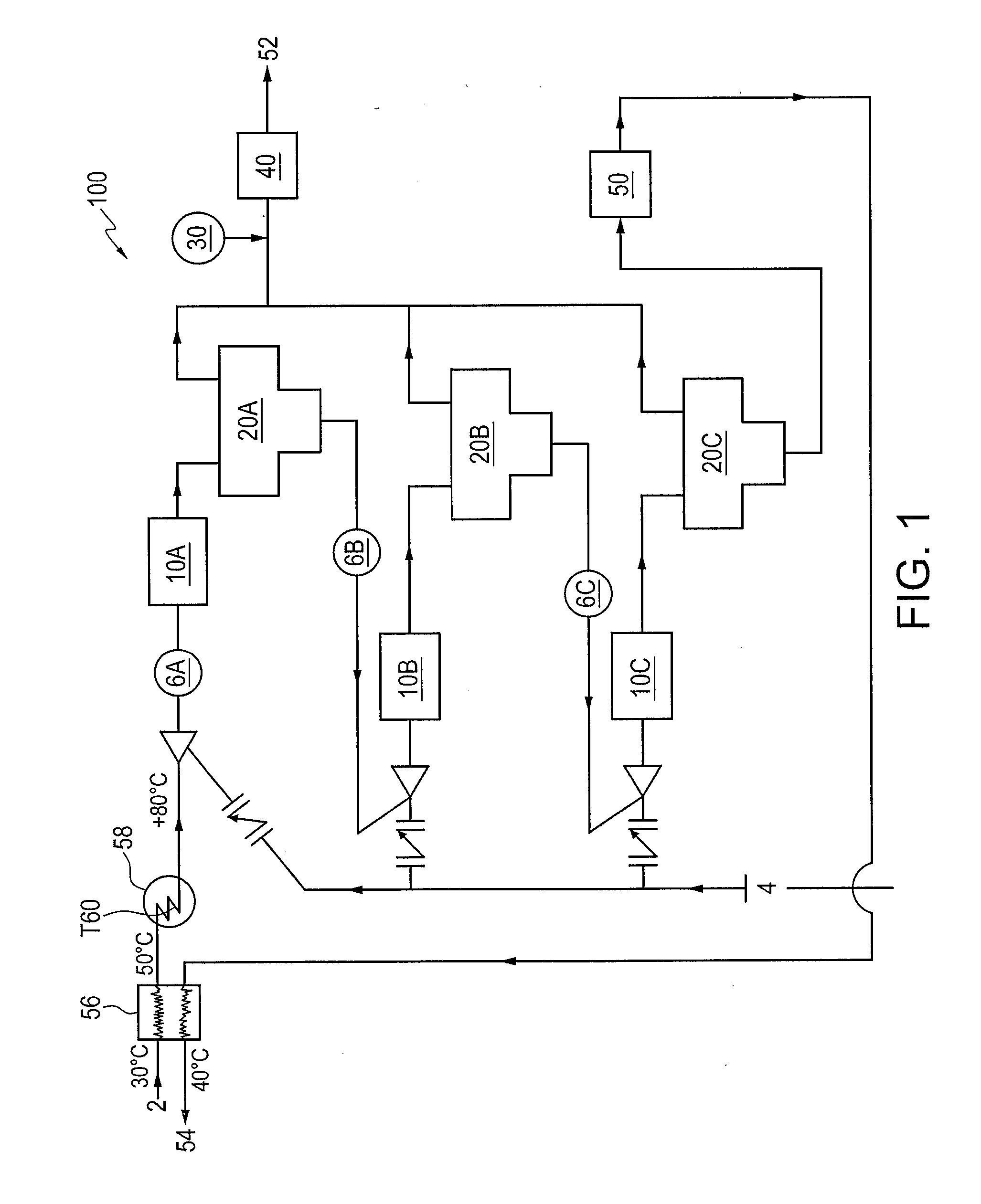Removal of hydrogen sulfide from water
a technology of hydrogen sulfide and water, applied in water/sludge/sewage treatment, water contaminants, specific water treatment objectives, etc., can solve the problems of high triazine consumption, high cost of triazine, and overall reaction is relatively slow, so as to reduce the ph of sour water
- Summary
- Abstract
- Description
- Claims
- Application Information
AI Technical Summary
Benefits of technology
Problems solved by technology
Method used
Image
Examples
example 1
[0037]Samples of inlet water were subjected to four (4) separate stripping steps using methane as the stripping gas under varying conditions, namely, (i) 30° C. (base case); (ii) 30° C. and addition of 40 m3 / d HCl; (iii) 60° C. and addition of 40 m3 / d HCl; (iv) 80° C. and addition of 40 m3 / d HCl; and (v) 30° C. and increasing stripping gas to 10 million standard cubic feet per day (MMSCFD) per stage. The amount of H2S in both the water phases and gas phases was determined immediately prior to entering the first stripper and then after each of the four stripping steps. The amount of H2S is given in kgmol / hr, as the unit is being operated on a continuous basis. Table 1 gives the results of the above five different conditions considered.
TABLE 1Methane Stripping Gas30° C.30° C., Increase30° C.AddTemperatureTemperatureStripping Gas toBase40 m3 / dto 60° C.to 80° C.10 MMSCFDCaseHCLwith HCLwith HCLper StageInlet Sep Water H2Skgmol / hr1.9691.2930.8370.5051.2931st Stripper Water H2Skgmol / hr0.33...
PUM
| Property | Measurement | Unit |
|---|---|---|
| temperature | aaaaa | aaaaa |
| pH | aaaaa | aaaaa |
| corrosion | aaaaa | aaaaa |
Abstract
Description
Claims
Application Information
 Login to View More
Login to View More - R&D
- Intellectual Property
- Life Sciences
- Materials
- Tech Scout
- Unparalleled Data Quality
- Higher Quality Content
- 60% Fewer Hallucinations
Browse by: Latest US Patents, China's latest patents, Technical Efficacy Thesaurus, Application Domain, Technology Topic, Popular Technical Reports.
© 2025 PatSnap. All rights reserved.Legal|Privacy policy|Modern Slavery Act Transparency Statement|Sitemap|About US| Contact US: help@patsnap.com


